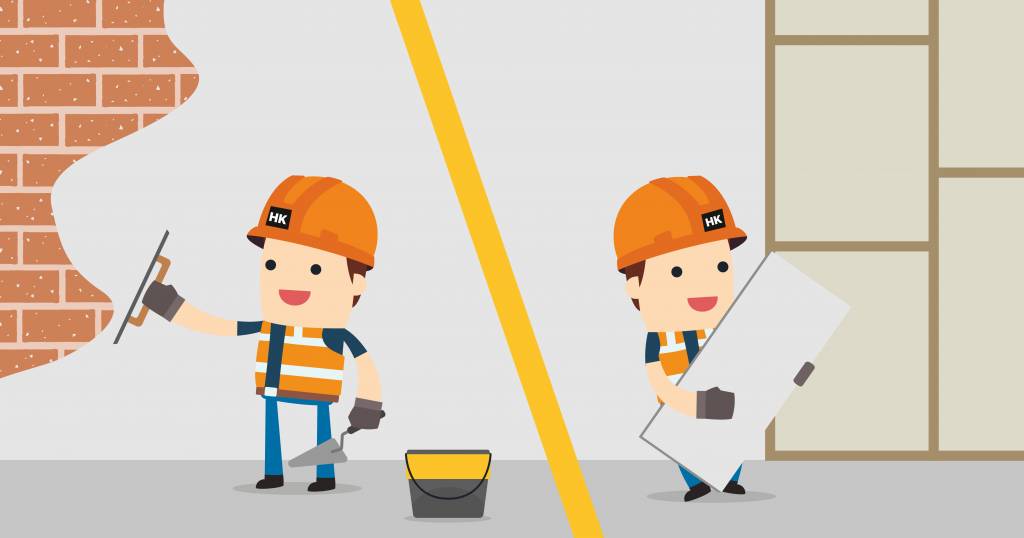DIY has enjoyed a dramatic increase in engagement from the UK’s homeowners in recent years, largely as a result of a boom during the early days of the coronavirus lockdowns. Since then, inflation and other money issues have continued to inspire people to take housework into their own hands – which, inevitably, leads people to difficult jobs like plastering. Plastering is a simple yet essential part of redecorating, but not many know about the materials or process behind it.
Plaster, Explained
First, let’s begin by learning about plaster. What is it, and what different types are there? Functionally, plaster is a stone- or mineral-based material that is used to coat surfaces. Plasters harden after application, leaving a solid product behind. There are various purposes for plaster, from the aesthetic to the protective – and there are also different forms, used in different bespoke applications.
The term ‘plaster’ is typically used to describe a limed-based paste, designed to coat internal walls. The mix comprises sand, lime and water, and is used to add both insulation and a smooth surface to walls. There is a harder-wearing exterior analogue to plaster, called ‘render’; this is often cement-based, and used to protect outside walls from the elements while adding insulative properties.
Plaster Vs. Plasterboard
If plaster is a wet product applied to walls, then what is plasterboard? Plasterboard is a pre-fabricated sheet material, comprising a gypsum-based plaster material that is set at a pre-defined width. Plasterboard is designed as a swift and effective alternative to the conventional plastering process – wherein thin wooden slats or ‘laths’ are affixed to wall studs, and layers of plaster applied over the top. Plasterboard is an inexpensive and convenient alternative, being installed straight to studs with little more than drywall screws.
Do You Need to Plaster Plasterboard?
Despite plasterboard being something of an alternative to plaster, it is still a common sight to see plaster ‘skimmed’ over the top of installed plasterboard. This is by no means a necessity, but is recommended – and here is why.
Plasterboard sheets butt up against one another on a given internal wall, but the seams between them are a significant presence. The skimming of plaster over the whole wall can even the surface for painting and wallpapering, ensuring no unsightly marks show through. The extra skim layer can also improve insulation in the finished space.
Plastering Tips
To the uninitiated, plastering can seem like something of a dark art, best left to trade professionals. However, the DIY decorator should not be put off from attempting plastering. To make the most of any plastering attempt, there are two simple tips to bear in mind. Firstly, moisture is key. A too-thick plaster will be hard to apply and harder to control once on the wall, while a thin plaster will remain wet for longer. A thin first coat, followed immediately by a second coat, will make the process much easier and lead to a better end result.


